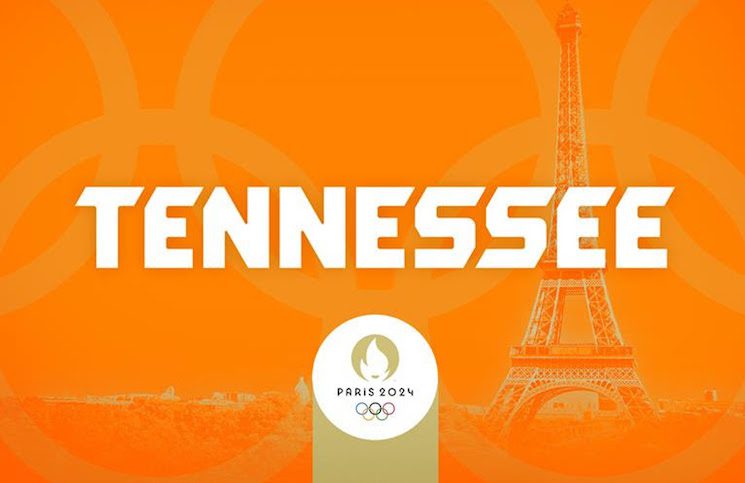
This Week in UT Sports History is a weekly column written by RTI columnist Lexie Little
Last week, the Southeastern Conference announced it will allow athletes to use facilities on campuses for voluntary workouts beginning June 8th. The conference had previously suspended all athletic activities through May 31st in response to the COVID-19 pandemic. Now, each school must consider the health of its athletes, coaches, and staff as administrators look toward the fall. Each school continues to develop its own safety guidelines under stringent supervision of university personnel and health authorities.
“The safe and healthy return of our student-athletes, coaches, administrators and our greater university communities have been and will continue to serve as our guiding principle as we navigate this complex and constantly-evolving situation,” SEC Commissioner Greg Sankey said in a press release. “At this time, we are preparing to begin the fall sports season as currently scheduled, and this limited resumption of voluntary athletic activities on June 8 is an important initial step in that process.”
Tennessee Director of Athletics Phillip Fulmer has been one of the more cautious voices during the pandemic, urging patience and adaptation as experts seek best practices. The new routine for returning athletes on Rocky Top might be rocky by far with adjustments to schedules and protocols.
“Our staff and student-athletes should be prepared for a ‘new normal,’ as we’ll be implementing changes to how everyone accesses and uses our facilities,” Fulmer said. “We plan to be extremely diligent in maintaining a healthy environment for our student-athletes, coaches and support staffs. In the coming days, we’ll execute procedures enabling student-athletes to return, with members of our football program being the first to arrive. We will conduct screening leading up to the resumption of activities on June 8.”
The fate of fall football remains up in the air, and taking cues from the past to determine the future seems unlikely given drastic changes in technology, population, and external world affairs.
In 1918, many schools failed to field teams until October or November during the Spanish Influenza outbreak, playing only a handful of games to boost morale while both the pandemic and World War I raged. The University of Tennessee suspended varsity football in 1917 and 1918 because most players served in the military. However, Tennessee’s Student Army Training Corps (SATC) team played independently in November 1918 on Wait Field (now the site of the Walter Life Science building on campus) after being “crippled in the early part of the season by the influenza pandemic, which completely suspended all activities of the institution for several weeks and kept a number of players from practice…” according to a Nov. 16, 1918 report from The Journal and Tribune in Knoxville.
Without a vaccine and continued need for social distancing measures, the likelihood of a return to SEC football as usual seems bleak. Regardless, the plans made for players and coaches this week before June will go down in Tennessee’s athletic history.
To keep distracted as the situation evolves, check out other moments from Tennessee’s past in “This Week in UT Sports History.”
May 27, 1950
As spring blooms into summer, collegiate track stars race toward the end of the season. In 1950, Herb Neff reached new heights – literally – breaking the Southern-Southeastern Conference interleague track and field meet record in the high jump. Neff lunged to 6 feet 5 1/4 inches at the meet in Atlanta. Meanwhile, fellow Vol Jack Stroud set a new University of Tennessee record in javelin with a throw of 196 feet 2 inches. The SEC defeated the Southern Conference, of which many SEC schools had once been members.
Prior to the formation of the SEC in 1933, Alabama, Auburn, Georgia, Florida, LSU, Vanderbilt, Ole Miss, Kentucky, Mississippi State, and Tennessee all belonged to the Southern Conference. At the time of the interconference meet in 1950, South Carolina belonged to the Southern Conference, as did future Atlantic Coast Conference (ACC) members Clemson, North Carolina, North Carolina State, Maryland, Duke, and Wake Forest.
Neff came short of his own program record at the meet, having hit the 6 feet 5 1/2 inches mark earlier in the season against Kentucky. However, his first-place contribution added points to his conference’s 81-50 victory. Alabama took team honors in points (19) while North Carolina’s Bill Albans earned an impressive 18 individual points.
Stroud finished behind Albans’ teammate Bob Kirk, who threw an impressive 205 feet 5 inches in the javelin throw.
That season, Tennessee made its first appearance in the NCAA Outdoor Tournament. Football star Doug Atkins competed on that track and field team, lettering from 1950-1952. A high jump champion, Atkins used his agility to bound over blockers and plague quarterbacks. The formidable pass rusher, who was named to the NFL’s 100th Anniversary All-Time Team in 2019, is one of only a few players to have his jersey (91) retired at Tennessee.
May 30, 2007
Golf remains one activity quelled less by COVID-19 as people distance for some recreation on the greens. In 2007, Tennessee’s men’s golf team found its way to the NCAA Championships in Williamsburg, Virginia. On day one of competition at the Golden Horse Golf Club, the 10th-seeded Vols tied with Alabama, Tulsa, and Vanderbilt for the 12th spot in the field of 30.
Nine strokes behind leader Stanford, Tennessee struggled at 4-over-par, 284. Despite a lackluster team showing, Charlie Ford fired a 1-under-par 69 round for the Vols, earning him the 15th individual spot. He stood at 3 under before three bogeys on the back nine diminished his two birdies and eagle on No. 8. His coach, Jim Kelson, remained optimistic.
“We did not play particularly well today,” Kelson said. “But I thought we did a good job of grinding out a decent round.”
Kelson believed his team stood at a good position to “move forward and move up,” but a poor 7-over-par 287 in the second round dropped them to 16th (11-over-par for the tournament), where they would finish on Day 3 despite a tournament-best even-par 280.
May 28, 2006
A year earlier, Lady Vol softball players capitalized on a different kind of swing. No. 5 in the nation, Tennessee faced Game 3 with No. 13 Michigan in a thriller to send the winner to the Women’s College World Series. With Monica Abbott on the mound, the Lady Vols could count on clutch pitching for a strong defensive effort. The burden rested on the bats.
Katherine Card took a swing in the top of the sixth inning. A little blip of a single spurted toward right field. Already at third following an infield single, sacrifice bunt, and wild pitch, India Chiles sprinted down the line for home. Score: 1-0 Lady Vols.
One would imagine Tennessee fans across the country would be at the edge of their seats watching as Michigan loaded the bases, only down by one. Roars would erupt as Abbott earned her ninth and final strikeout with bases loaded to end the game.
But only attendees saw it.
ESPN cut away from the game to air praises of Barry Bonds’ 715th home run against Colorado, one that broke Babe Ruth’s second place record behind Hank Aaron. While a historic milestone for Major League Baseball, the instance stood as an example of diminishing coverage of women’s sports.
In 2015, researchers at the University of Southern California published a 25-year-long study following women’s sports in televised news and highlight shows like “SportsCenter.” The study showed that coverage of female athletes and athletic events remained dismally low, with stories like that about a $25 corndog at an Arizona Diamondbacks game making it to the air over women’s sporting events. Though respect for female athletes has improved with fewer sexualizations, coverage of men’s sports still attains more verve and excitement – and airtime – than the matter-of-fact, infinitesimal detailing of women’s sports.
The NFL Draft earlier in 2020 stands as a good example. Despite a successful, record-breaking WNBA Draft the week prior, many sportscasters portrayed the NFL Draft as the first significant sporting event during the COVID-19 pandemic. Just as the Lady Vols were overshadowed by one at-bat for Bonds, the new WNBA players celebrated in the shadow of the National Football League.
Perhaps the lack of sports during this period will create an overall increase in appetite for athletics, men’s or women’s, and lessen the divide in coverage. But the priority now remains equitable health and safety of all athletes, coaches, and staff – all men and women.



